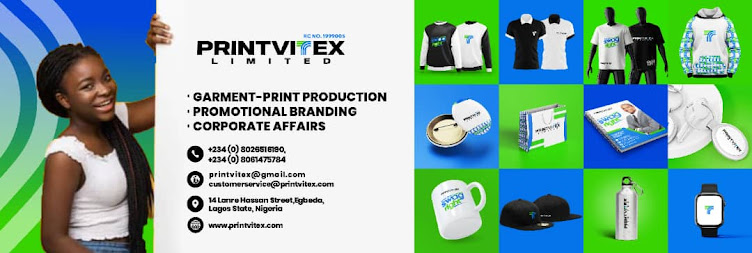In the dynamic landscape of branding and promotional strategies, unconventional approaches are often the ones that leave lasting impressions. The recent news of Donald Trump's mugshot being utilized for promotional purposes has ignited a fascinating conversation about the power of edgy imagery in the realm of promotional branding. This unprecedented move has not only sparked curiosity but also provides valuable insights into the potential of incorporating controversial visuals to create impactful promotional merchandise.
The Unconventional Approach: Mugshots as a Promotional Tool
In the case of Donald Trump's mugshot, we witnessed an unexpected turn of events as the image made its way onto various promotional platforms. What was once a symbol of legal proceedings is now being transformed into a conversation starter and, quite remarkably, a fundraising tool. However, the usage of Trumps mugshot prompts us to to question whether pushing boundaries and embracing controversial visuals could create a more lasting impact. By incorporating edgy imagery into promotional goods, brands have the potential to:
- Generate Attention: Edgy imagery is inherently attention-grabbing. In a world inundated with mundane promotions, the unexpected can stand out. The mug shot, an image typically associated with criminality, drew widespread attention not only from detractors but also from supporters, sparking conversations that transcended political lines.
- Create Conversation: Controversy breeds conversation. By choosing provocative visuals, brands can spark discussions and debates, driving engagement both online and offline. This can result in heightened brand visibility and recall.
- Evoke Emotions: Edgy imagery evokes emotions that can linger in people's minds. These emotions can be harnessed to create a deeper connection between the brand and its audience. Whether it's shock, amusement, or curiosity, the emotional response becomes linked to the brand itself.
- Challenge Norms: Brands that embrace edgy imagery demonstrate a willingness to challenge norms and conventions. This can resonate with audiences seeking authenticity and boldness, ultimately fostering brand loyalty.
For Makers:
- Design Creativity: Makers have the opportunity to flex their creative muscles, exploring unconventional designs that tell a story and provoke thought.
- Ethical Considerations: Makers must navigate ethical dilemmas when dealing with potentially polarizing imagery. Striking a balance between pushing boundaries and respecting sensibilities is crucial.
- Branding as a Risk-Taker: Makers who successfully incorporate edgy imagery can position themselves as risk-takers and innovators in their industry, attracting clients seeking to make a bold statement.
For Users:
- Personal Connection: Edgy imagery can elicit stronger emotional responses from users, leading to a more profound personal connection with the brand and the merchandise.
- Conversation Starters: Users become walking conversation starters, allowing them to share the story behind the imagery and the brand's values.
- Empowerment and Identity: Embracing a controversial image can empower users by making them feel part of a movement challenging norms. They identify with the brand's message and are more likely to champion it.
For Brand Owners:
- Engagement: The use of edgy imagery in promotional merchandise has the potential to stir emotions and spark discussions. This can lead to increased engagement, drawing attention not just from supporters but also from a wider audience.
- Memorability: Unconventional imagery tends to linger in the minds of viewers. When incorporated thoughtfully, such imagery can create a memorable connection between the brand and its audience, leading to a more profound impact.
- Audience Segmentation: Edgy imagery allows for precise audience segmentation. It attracts individuals who resonate with bold messaging, enabling brands to target a specific demographic that aligns with their messaging.
- Storytelling: The use of controversial imagery can serve as a powerful storytelling tool. It opens avenues for brands to communicate their narratives in a compelling and thought-provoking manner.
Leveraging Controversy for Positive Impact:
While the use of edgy imagery comes with its challenges, it also presents an opportunity for brands to make a statement and differentiate themselves from the competition. To harness the power of controversy in promotional branding, here are a few strategies to consider:
- Know Your Audience: Understanding your target audience's preferences, values, and willingness to engage with edgy content is essential. Not all audiences will respond positively to controversy.
- Message Alignment: Ensure that the edgy imagery aligns with the brand's values and messaging. It must not feel forced or out of character. Authenticity is key to maintaining credibility.
- Navigate Ethical Terrain: Ethical considerations are paramount. Brands must assess the potential impact of controversial imagery on different stakeholders and society as a whole.
- Strategic Storytelling: The incorporation of edgy imagery should be part of a larger narrative that resonates with the brand's identity and mission.
- Balancing Risks and Rewards: While edgy imagery can yield substantial rewards, it also carries risks. Brands should carefully weigh these factors before taking the leap.
Bottomline:
In a world saturated with promotional merchandise, standing out requires innovation, being bold and challenging the status quo. These examples of leveraging Donald Trump's mugshot serves as a reminder that pushing boundaries can lead to powerful results. By thoughtfully integrating edgy imagery into promotional goods, brands can create a profound impact, foster engagement, and challenge norms, all while staying true to their unique narratives and stimulating the way they connect with their audience.











